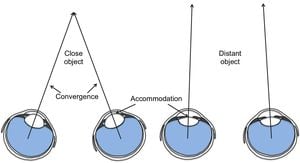North Korean troops have reportedly withdrawn from the front lines of the Kursk region, Russia, following significant casualties suffered during combat with Ukrainian forces. This notable shift, which occurred about three weeks ago, has raised questions about the effectiveness of these soldiers and their overall role on the battlefield.
According to Colonel Oleksandr Kindratenko, spokesperson for Ukraine's Special Operations Forces, “We inform you, the presence of North Korean troops has not been observed for about three weeks, and they were probably forced to withdraw after heavy losses.” This statement reflects the assessment closely shared by various Ukrainian military officials.
Initially, more than 11,000 North Korean troops had been deployed to assist Russian forces, signaling Pyongyang’s increasing military partnership with Moscow amid the protracted conflict. Reports indicate these troops arrived around mid-October 2024, aimed at strengthening Russian military operations against Ukraine.
International monitoring has suggested North Korean soldiers took on battle roles to exert pressure on Ukrainian defenses. The involvement of these troops was raised with considerable concern from Western officials, apprehensive about the potential impact of their presence on the battlefield. The North Korean soldiers, composed mainly of elite special operations forces, sought to engage alongside Russian troops actively fighting to reclaim territory lost to Ukraine.
Reflecting on the situation, several observers noted the significant losses faced by North Korean soldiers, culminating around 4,000 casualties sustained. This figure has been echoed by multiple sources and raises concerns about the overall strategy employed by these units. “DPRK troops have intensified the pressure on Ukraine’s defense,” as reported by RFE/RL, signifying their briefly impactful engagement under fire.
The Ukrainian military's initial prediction proved astute after their surprise incursion across the border in August 2024, where they swiftly gained control of substantial territories, stretching approximately 1,300 square kilometers. The chaos following this offensive caught Russian forces off-guard and laid the groundwork for the subsequent engagement with North Korean soldiers.
Compounded by this initial disorder, and as the weather turned against them, reports suggest Russian commanders helped deploy North Korean assets to realign battleground tactics following Ukraine's advances alluded to before. This decision indicated rising desperation on Russia’s part to bolster their fighting capabilities against Ukrainian advances.
Despite the heavy losses, some experts indicate this withdrawal might not signal the end of North Korean military engagement in the region. Instead, reports suggest “the withdrawal may be temporary, as they could return after additional training,” according to The New York Times.
Such tactical redeployment could allow North Korean forces to reassess battlefield strategies observed during their engagement. Intelligence reports highlight they may need time to recuperate and receive training enhancements before re-engaging.
Overall assessments place heightened scrutiny on how future deployments evolve from North Korea. Many military analysts speculate the Kremlin's strategy may now pivot, seeking to not only utilize but also to rotate its North Korean contingents periodically to mitigate casualty rates.
Ukrainian intelligence has raised alarms concerning the continued likelihood of North Korea sending more soldiers should the conflict escalate. South Korea’s military intelligence has indicated recent preparations by Pyongyang for smooth transitions of ground troops, notwithstanding significant losses previously sustained.
A senior Pentagon official highlighted the potential of fresh deployments forthcoming as part of Pyongyang's original intentions when first dispatching troops to Russia—including securing military technology and assistance promised by Moscow.
Whatever the future holds, the withdrawal of North Korean troops from the Kursk here reflects the unpredictable nature of modern warfare, emphasizing how quickly operational dynamics can shift under fire. The changing tides between Russia and Ukraine command continuous observation, especially with international efforts geared toward resolving this conflict clouded by the uncertainties of troop movements.
The withdrawal may reflect broader battlefield realities where alignments shift rapidly, pointing toward changing strategies as each side seeks to outmaneuver the other. The integration challenges between DPRK forces and Russian units, marked by language barriers and tactical disparities, also suggest difficulties can arise under real operational pressures.
While it remains unclear how effective alternative North Korean troop deployments will be, their withdrawal signals at least one lesson learned during this complicated phase of conflict leading the eyes of military observers, diplomats, and analysts to remain fixed on developments across this tense front.



